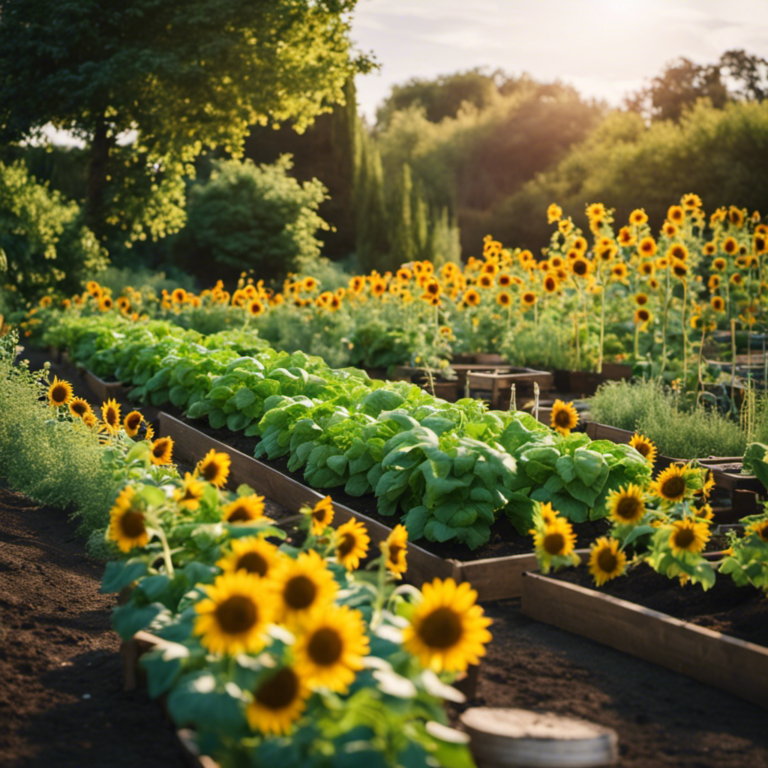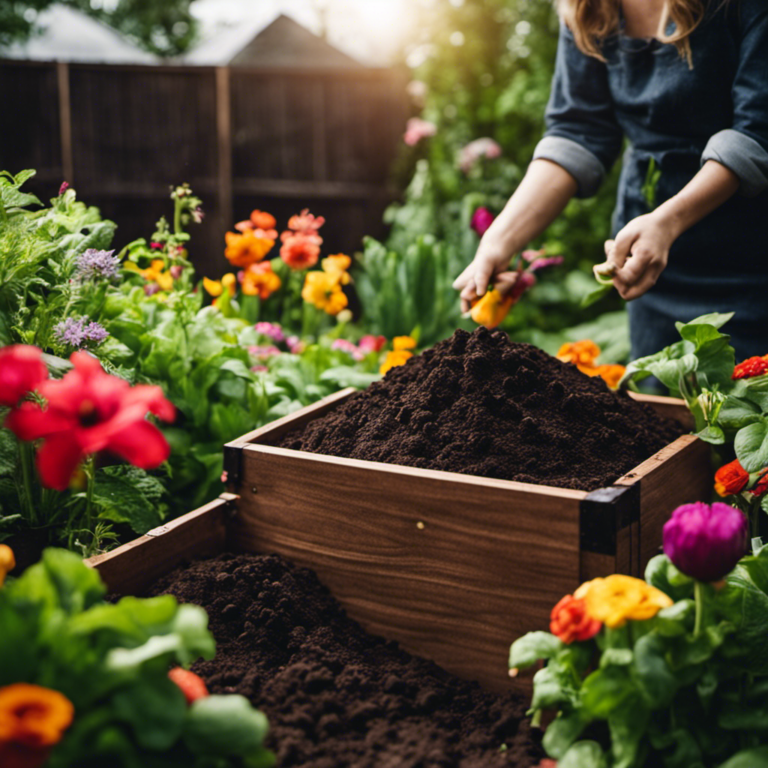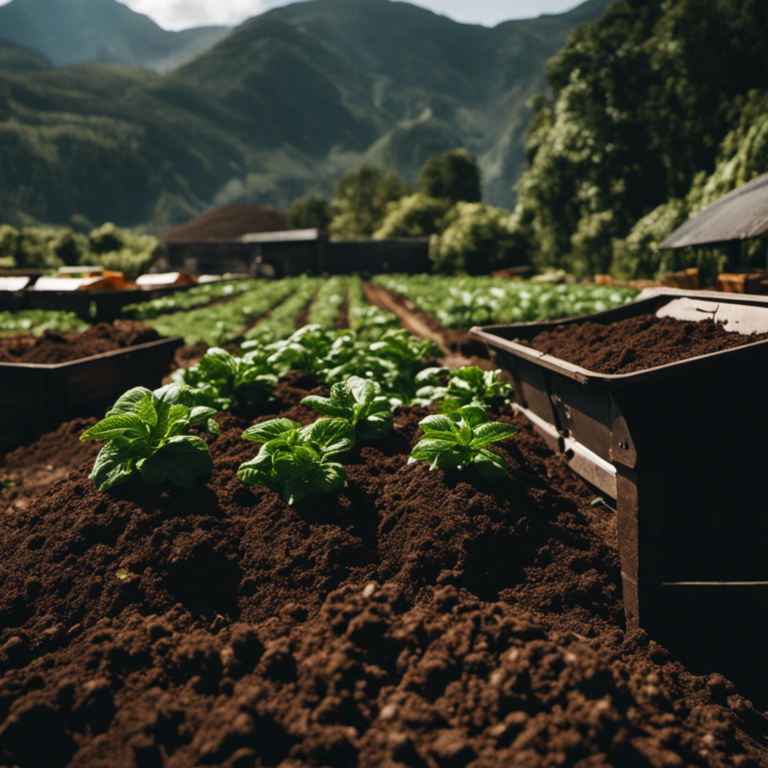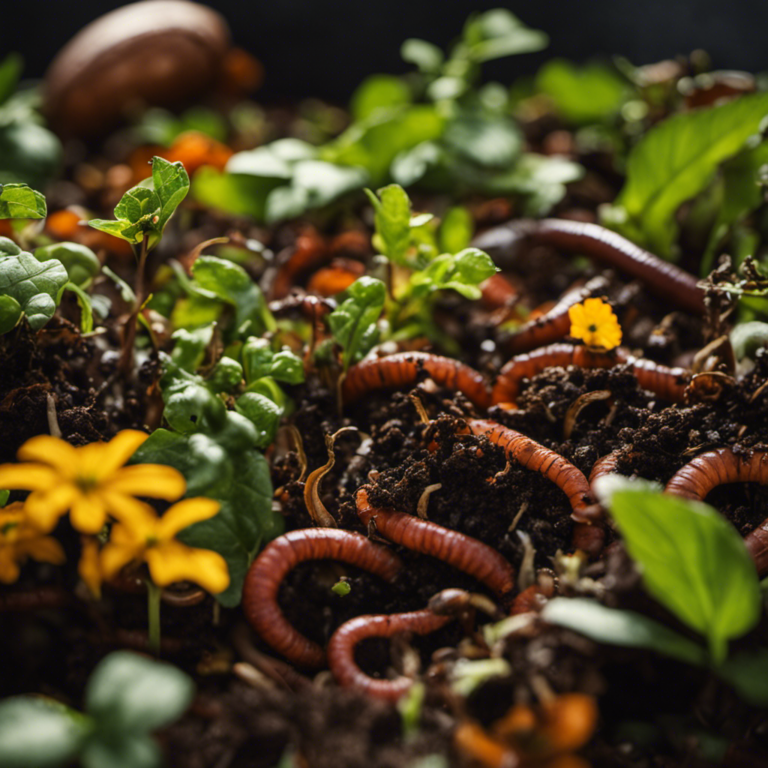Hey there, fellow garden enthusiasts!
Are you ready to take your organic gardening skills to the next level? If so, you’re in the right place. In this article, we’ll explore some effective composting techniques that will help your garden flourish like never before.
From traditional methods to vermicomposting and bokashi composting, we’ll cover a wide range of options. Get ready to learn about the power of hot composting and how green manure can enrich your soil.
Let’s roll up our sleeves and create nutrient-rich soil that will work wonders for your plants!
Key Takeaways
Unlock the Power of Composting for Organic Gardening
Composting is a crucial practice that can unlock the full potential of your organic garden. By utilizing different composting techniques like traditional methods, vermicomposting, bokashi composting, hot composting, and green manure composting, you can create nutrient-rich soil that will nourish your plants and promote healthy growth.
So why wait? Start exploring the world of composting and witness your garden thrive like never before. Remember, composting is essential for a flourishing garden and plays a vital role in sustainable gardening practices.
Traditional Composting Methods
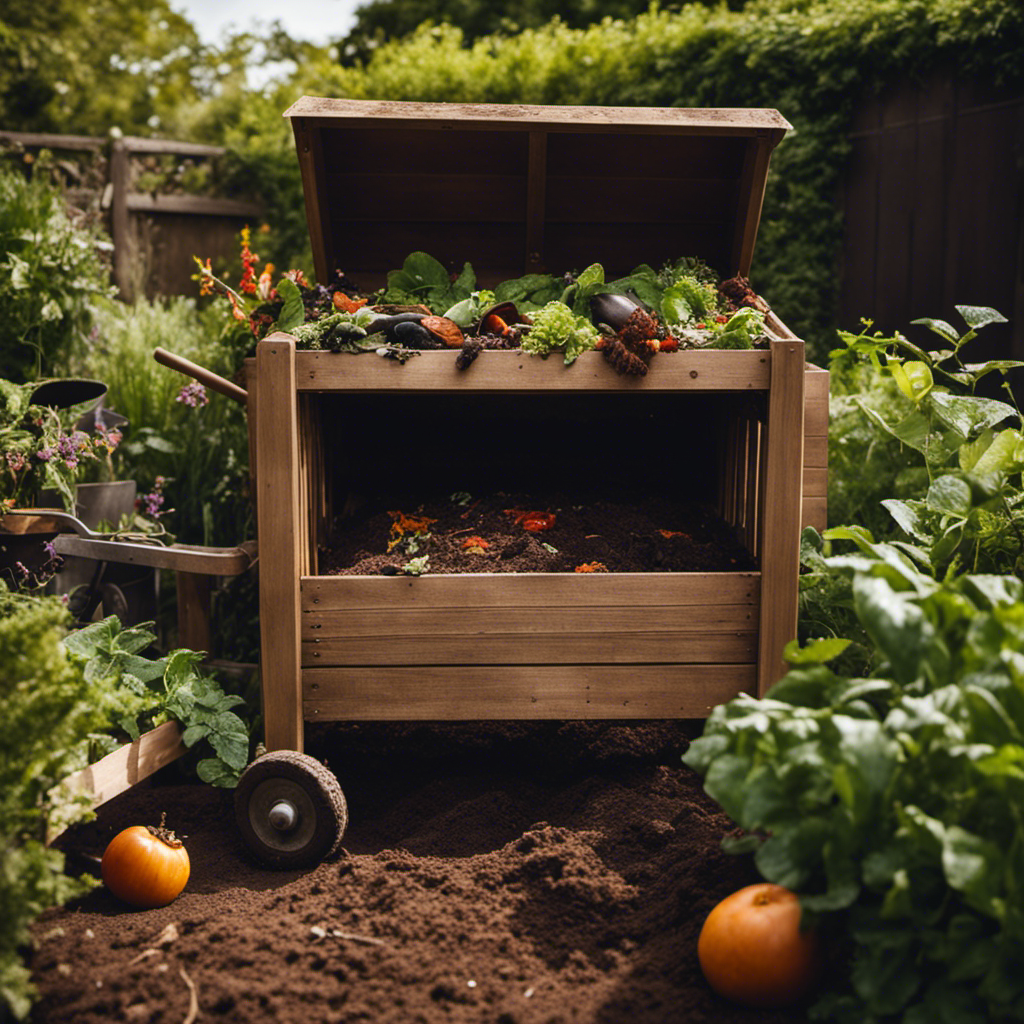
Traditional Composting Methods
When it comes to composting, there are two main methods: aerobic and anaerobic.
Aerobic composting is the more efficient and commonly used method. It requires oxygen to break down organic matter effectively. To do aerobic composting, you need to create a balance of carbon and nitrogen by layering green and brown materials. Green materials like vegetable scraps and grass clippings provide nitrogen, while brown materials like dry leaves and twigs provide carbon. Turning the compost pile every few weeks helps provide oxygen and speeds up the decomposition process. This method also generates heat, which is beneficial in killing weed seeds and pathogens.
On the other hand, anaerobic composting occurs without oxygen. While it can be useful for disposing of large amounts of biomass quickly, it’s less efficient and can produce unpleasant odors. In anaerobic composting, organic matter is buried deep in the ground to create an oxygen-free environment. However, it’s important to note that this method produces methane, a potent greenhouse gas.
Vermicomposting
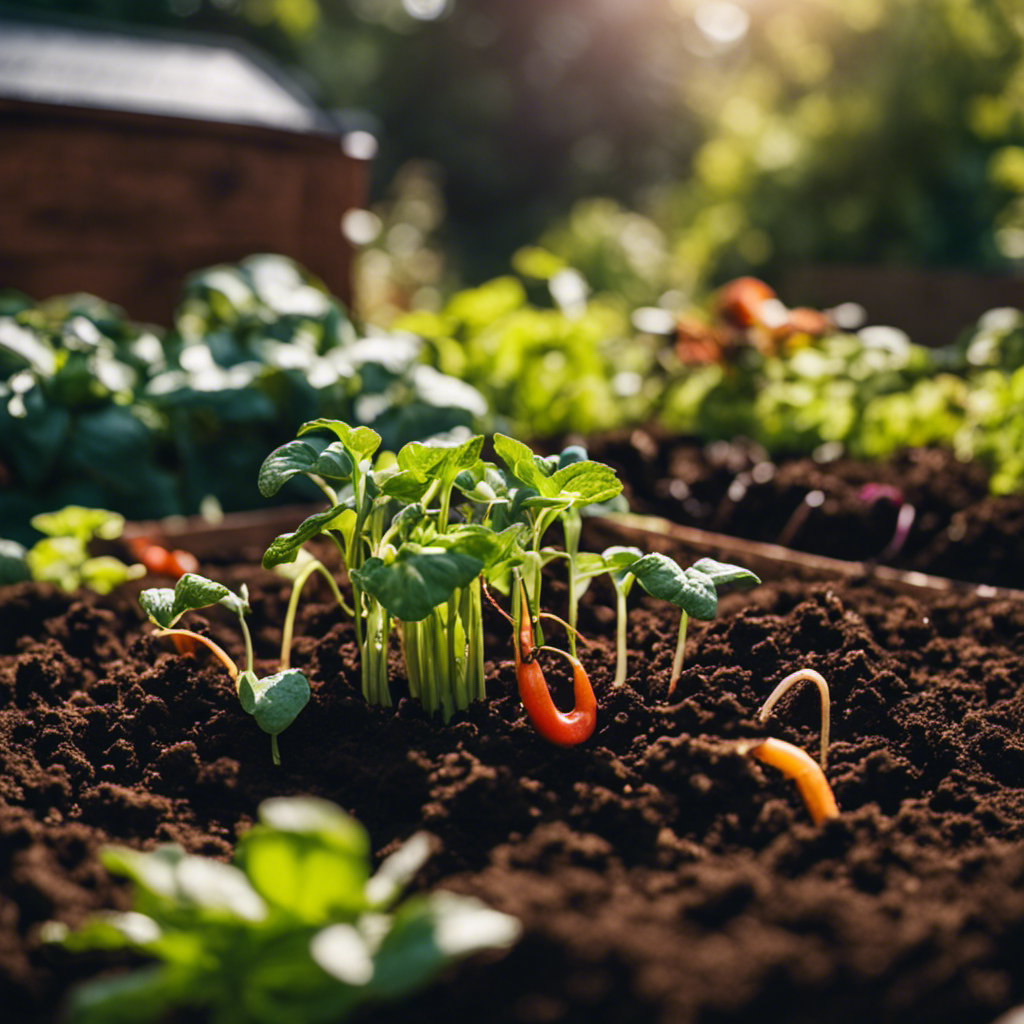
Moving away from traditional composting methods, vermicomposting is a fantastic technique to improve the decomposition process and enrich the nutrient content of organic gardening. Vermicomposting involves using worms, specifically red wigglers, to break down organic waste into nutrient-rich compost. This process is also commonly referred to as worm farming.
Worm farming is a simple and efficient way to convert kitchen scraps, yard waste, and other organic materials into a valuable soil amendment. The worms consume the organic matter and produce nutrient-rich castings, known as vermicompost. This vermicompost serves as an excellent fertilizer that can be added to garden beds, potted plants, or used as a top dressing for lawns.
Vermicomposting not only helps reduce waste but also contributes to soil enrichment. The castings produced by the worms are rich in macro and micronutrients, beneficial bacteria, and enzymes that improve soil structure, moisture retention, and nutrient availability. This nutrient-dense vermicompost acts as a natural slow-release fertilizer, providing plants with essential nutrients over an extended period.
To begin vermicomposting, you’ll need a suitable container or worm bin along with bedding material such as shredded newspaper or cardboard. Introduce red wigglers to the bin along with the organic waste. It’s important to maintain proper moisture levels and provide a well-balanced diet for the worms.
Bokashi Composting
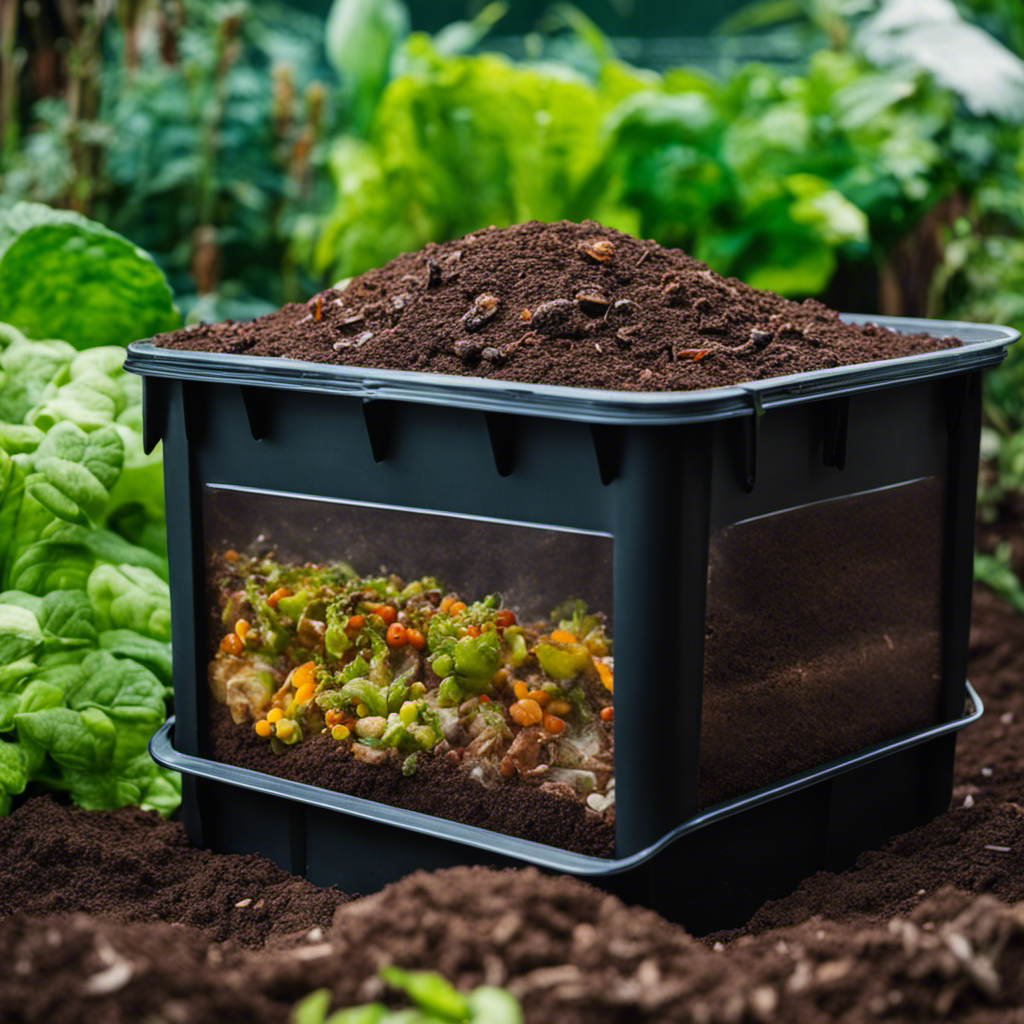
In my experience with organic gardening, I have found great success using the bokashi composting method. Bokashi composting is a technique that involves anaerobic composting and bokashi fermentation to efficiently break down organic waste. Unlike traditional composting methods, bokashi composting allows for the composting of all types of kitchen scraps, including meat, dairy, and cooked foods.
One of the major advantages of bokashi composting is its ability to break down waste at a faster rate compared to aerobic composting. This is due to the anaerobic environment created during the bokashi fermentation process. The fermentation process utilizes beneficial microorganisms, like lactobacillus, to ferment the organic matter, resulting in a nutrient-rich liquid called bokashi juice.
To better understand the benefits of bokashi composting, let’s compare it to traditional aerobic composting:
| Bokashi Composting | Traditional Aerobic Composting |
|---|---|
| Anaerobic process | Aerobic process |
| Composts all types of kitchen scraps | Limited to plant-based materials |
| Faster composting time | Slower composting time |
| Requires an airtight container | Open compost pile or bin |
| Produces bokashi juice | Does not produce liquid |
Hot Composting Techniques
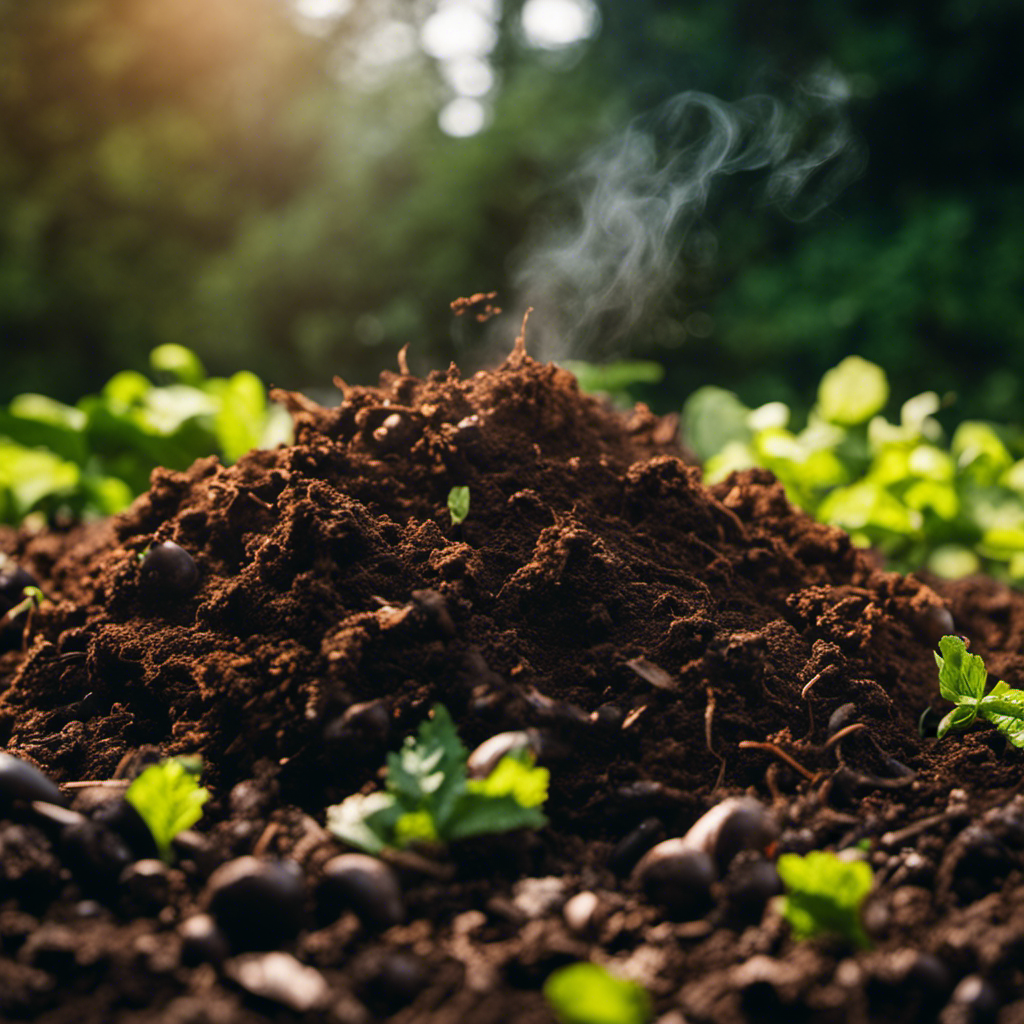
Exploring different composting techniques in my organic gardening journey, I’ve come across the effectiveness of hot composting methods. Hot composting offers several advantages over traditional methods, making it a great choice for maximizing composting efforts.
One major benefit of hot composting is its ability to rapidly break down organic matter. The high temperatures generated during the process speed up decomposition, resulting in quicker compost production. This means you can have usable compost in a shorter time frame, providing your garden with nutrient-rich soil on a continuous basis.
Another advantage of hot composting is its ability to eliminate weed seeds and plant pathogens. The high temperatures reached during the composting process effectively kill these potential threats, ensuring a weed and disease-free garden.
Even in limited spaces, hot composting can be successfully implemented. To achieve hot composting in small areas, it’s important to create a well-balanced compost pile. This involves layering equal amounts of brown and green materials, such as dried leaves and kitchen scraps, and regularly turning the pile to maintain airflow. Additionally, using a compost thermometer can help monitor the temperature and ensure it stays within the optimal range of 130-160°F (55-70°C) for hot composting.
Composting With Green Manure
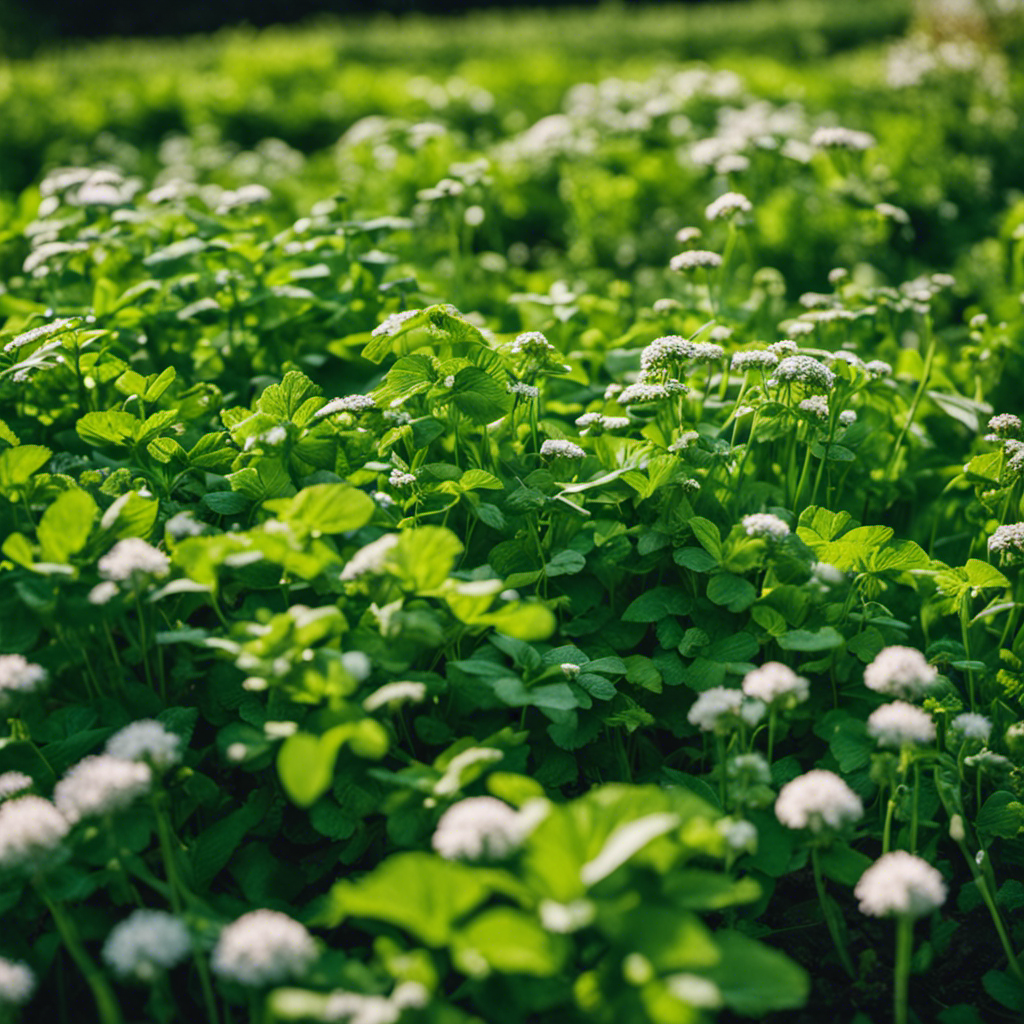
Composting With Green Manure
To explore composting techniques further, let’s discuss the benefits of incorporating green manure in organic gardening practices. Green manure involves growing specific crops, such as legumes or grasses, to enrich the soil with organic matter. This method offers several advantages for organic gardeners.
One of the main benefits of using green manure in organic gardening is its ability to improve soil fertility. Green manure crops, like clover or alfalfa, have deep roots that break up compacted soil, allowing better water and nutrient absorption. When these crops are later incorporated into the soil, they release valuable nutrients, such as nitrogen, phosphorus, and potassium, which are essential for plant growth.
Another advantage of green manure composting is its ability to suppress weeds. By growing dense green manure crops, the soil is protected from weed growth, eliminating the need for chemical herbicides. This not only saves time and effort but also promotes a healthier and more sustainable gardening practice.
To successfully incorporate green manure into your composting routine, keep a few tips in mind. First, choose the right green manure crop for your soil type and climate. Different crops have varying growth rates and nutrient profiles, so selecting one that suits your specific needs is important.
Secondly, time your green manure planting and incorporation correctly. This means planting the crop at the appropriate season and allowing it to grow for the recommended period before incorporating it into the soil. This ensures that the green manure has enough time to break down and release its nutrients.
Lastly, ensure proper incorporation of the green manure into the soil. This can be done by either tilling or cutting the plants before mixing them into the soil. It’s important to establish good contact between the green manure and the soil to maximize nutrient transfer.
Conclusion
Composting holds the key to unlocking the full potential of your organic garden. By utilizing various composting techniques such as traditional methods, vermicomposting, bokashi composting, hot composting, and green manure composting, you can create nutrient-rich soil that will nourish your plants and promote healthy growth.
So why wait? Start exploring the world of composting and witness your garden thrive like never before. Remember, the art of composting is essential for a flourishing garden.

